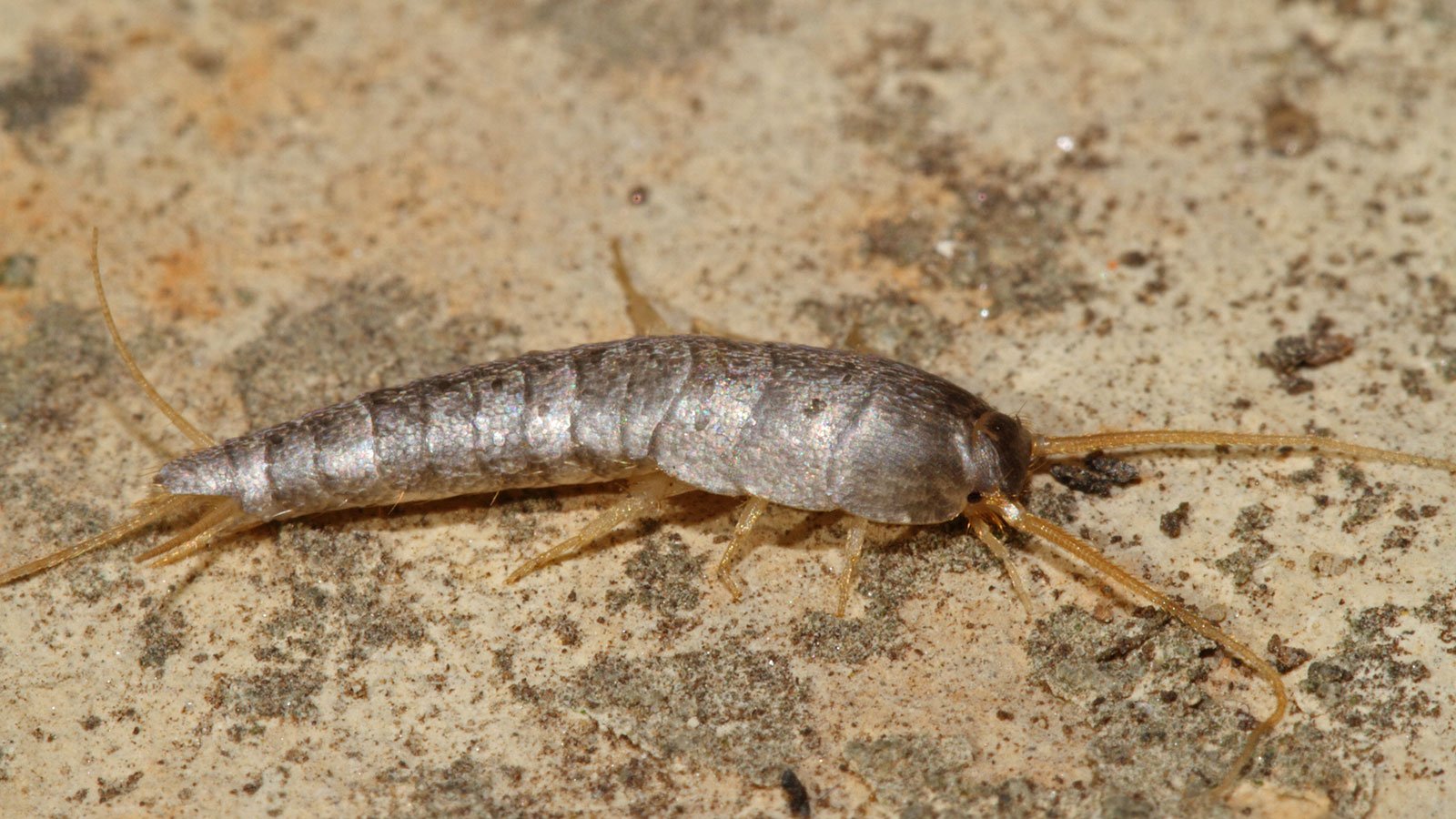
Silverfish
These grey, wingless, scaly creatures are found mostly in moist areas in the home, mainly the bathroom and kitchen because they prefer the humidity, particularly humidity above 70%. However, you might not see them very often because these insects love to hide in small cracks and crevices within the home, and once they’ve found a reliable food source, they tend to stay hidden in one place most of their lives.
Silverfish, like cockroaches, are insects that prefer paper, and even glue. They feed on the proteins found in book bindings, the glaze on envelopes, and wallpaper in the home. They will even eat other deceased silverfish just to gain access to those proteins.
Signs of an Investation
Silverfish are fast crawlers. They’re good at hiding, but an easy way to find a nest of silverfish is to check your roof. Roofs are excellent breeding sites for silverfish during the warm weather months. There is an abundance of moisture, cellulose, starch, and dead insects. From here, they can easily gain entrance and move down through the insulation to the sheetrock board with its glue and paper coating below. So if you want to find their nest, check the light fixtures in your home during the warm months. They’ll be nesting there.
-
You can make your home less hospitable to silverfish. Keep packaged foods in an airtight plastic or metal containers. Regularly vacuum any cracks, crevices, and other known silverfish hiding places. Fix any plumbing problems that might contribute to humidity problems, employing a dehumidifier to dry the air further if necessary.
-
In addition to the natural repulsion you and your house guests may feel for silverfish, these odd-looking insects’ eating habits can lead to considerable destruction around your home. The results may include lost valuable documents, damaged upholstery, ruined books, half-eaten groceries, and holes in your clothes.
Silverfish don’t seem to transfer diseases on the alarming scale of certain other pests. However, their molting activities can set off allergic reactions in susceptible individuals. They may also attract a variety of other pests who might regard them as a food source, multiplying your household pest headaches.
-
Silverfish seek warm, humid environments. They thrive in temperatures of 70 to 85 degrees Fahrenheit, a fact that makes many human residences an attractive harbor for their breeding activities. Silverfish egg development also requires humidity of at least 50 to 75 percent, causing the insects to frequent bathrooms, basements, and attics.

